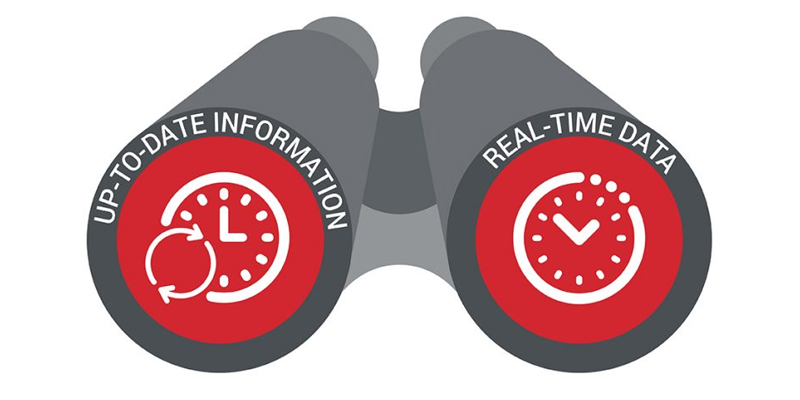Make your enterprise event-driven.
0.08 seconds. That’s the difference between the gold and silver medal in the 100 metres sprint during the 2016 Summer Olympics.1 It’s also the speed that enterprises need to operate at today. For financial brokers, 0.01 seconds — essentially real-time — can mean a difference of $8M/year. With an Event-Driven Architecture (EDA) you’re not only able to operate in real-time, but also lower your operational costs and provide the experience that today’s users expect.
The benefits of event driven architecture
Axway AMPLIFYTM enterprise integration platform can quickly and easily turn virtually anything into real-time event streams and enable discovery and management of integration points from any vendor. Here’s what that means for you:
Real-time data means you can make real-time decisions. A broker can make up to $8M/year if he gets market data 10ms faster.
You’re only requesting data when it changes, and only that data is being pushed through to you, so you’re less likely to hit limitations and incur restrictions that lead to additional costs.
Your customers, partners, and employees get instant access to more accurate information, allowing them to make better decisions. In turn, it improves their relationship with you as they have confidence in data you provide.
An event-driven architecture scales well to a large number of users. New services can be added without breaking the streams of data that are currently deployed.
Navigating the new streaming API landscape
Events-driven architecture by Axway
Turn everything into events to drive business
Enterprises have layers upon layers of applications, siloed data, and multiple integration patterns. Axway and its ecosystem of partners can turn any integration pattern — APIs, iPaaS, MFT, B2Bi, even from third parties — into events.
Go real-time cost-effectively
Event-enabling systems can be too difficult, too costly, or both since it requires rewriting the underlying code and logic of their applications. Axway event-enables without having to rewrite the code, making event-driven architecture more affordable and cost-effective.
Deploy anywhere
Most enterprises are hybrid. Axway’s hybrid integration platform can connect ground to cloud, and can deploy across all environments – on premises, cloud, hybrid.
Gain visibility and control
Axway and its ecosystem of partners give you complete visibility and control over all your digital assets, across integration patterns, environments, vendors, and of all your events.
Streams
Streams is an Event Hub that makes it easy to exchange messages and events between your microservices and ecosystem thanks to modern Event-Driven APIs. Event-Driven API (Server-Sent Events, Webhook, or Kafka) enable applications to consume events. Integrated with AMPLIFY, Streams allows you to centrally govern both traditional and Event-Driven APIs.
Does Your API Management Solution Supports Modern API Trends?
Download the Gartner report to find out.
Solace
Axway has a technology partnership with Solace. Axway provides a complete enterprise integration to which Solace adds real-time events, enabling a real-time enterprise without having to rewrite the applications.
Solace creates an event mesh that streams events from across your organization to the applications and services that need them, regardless of language and location, whether it’s on premises or any type of cloud. Solace’s Event Broker is an event mesh that allows you to register, discover, manage, and govern events.
Combine events with microservices
Soapbox: what is EDA and what does EDA stand for?
EDA, event-driven architecture, uses events as triggers among decoupled services instead of waiting for a request from a consumer. There are three key actors in event-driven architectures: an event consumer, an event router, and an event producer. An event consumer subscribes to the producer (“let me know when this happens”). Once the event takes place, the producer publishes the event to the router, which notifies the consumer (“it happened”). EDAs are often contrasted with REST APIs that are based on constant polling (“has it happened yet?”).


